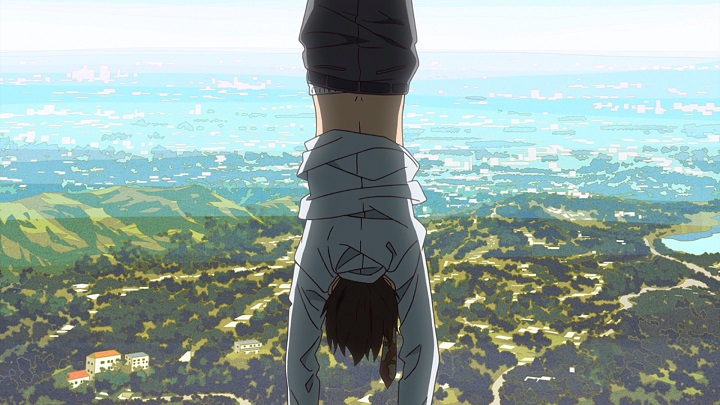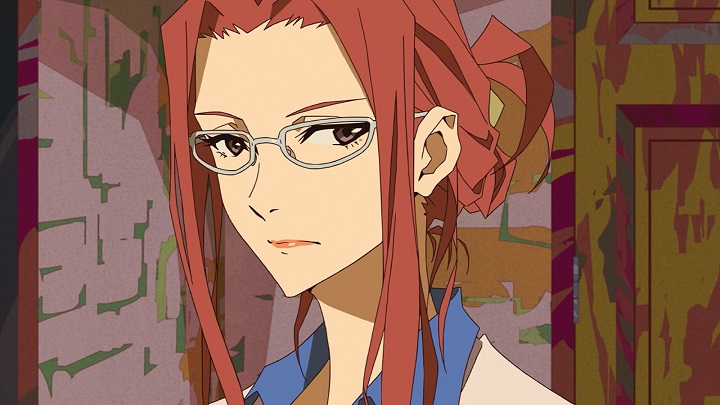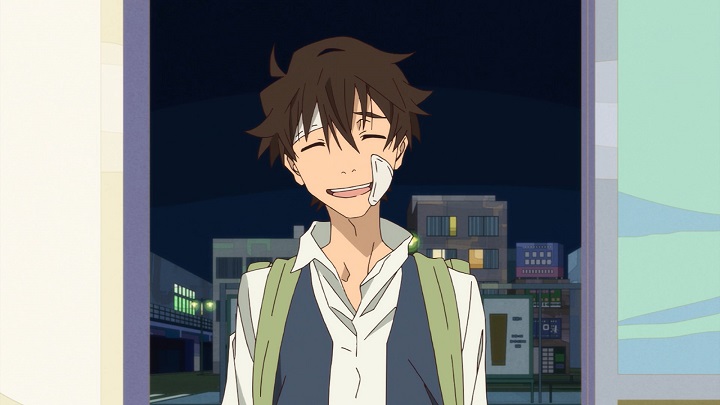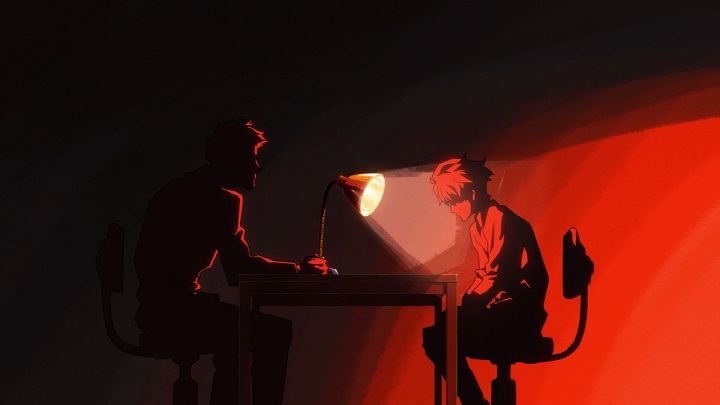In the realm of “Netflix Original” anime, my favorite remains 2019’s Rilakkuma and Kaoru (a stop motion ode to kindness and carefree living), but the much wilder and more subversive Great Pretender is currently giving it a run for its money. 14 of its projected 23 episodes were made available for Japanese viewers at the start of this month, and all 14 have been fansubbed in English since that time. The script is smart and snappy, too, which makes it a perfect fit for this ultra-polished effort from Hiro Kaburagi and Wit Studio. Kaburagi’s previous series was 91 Days, a mafia-themed revenge drama set in Prohibition-era America. Given that he chose to follow that up with a globe-hopping caper series inspired by Hollywood heist films, it’s clear that the man is something of a westaboo. But hey, that’s the kind of nerdiness you need to pull off a project this ambitious – well, that and a killer creative team – and luckily for fans of great anime, Great Pretender checks both boxes.
Before getting into the first five episodes, which constitute the show’s first arc (or “case”), I have to gush about its OP/ED combo, which is undoubtedly the best of 2020 thus far. Yutaka Yamada’s hard bop composition “G.P.” is out of this world, with an infectious piano/bass groove punctuated by screaming saxophones that give the piece a manic energy. That craziness matches both the OP’s constantly-morphing silhouette art (inspired by the title sequence of Steven Spielberg’s con artist flick “Catch Me If You Can”) and protagonist Makoto Edamura’s high-strung personality, and sets the tone for the series’ jazz-infused soundtrack. If there’s any justice in the world of animation, this OP will attract not just national, but global attention, the same way Pixar credits do. I love it to bits – almost as much as I love the ED, in fact.
Freddie Mercury’s cover of “The Great Pretender” serves as a showstopping finish to every episode, and it’s earned the series a lot of attention online thus far. But even better than the song choice are the ED’s accompanying visuals, which depict a cat’s journey home through oceans and snowfields. The cat is clearly meant to symbolize a human character, since it transforms into a man after being embraced by its female owner, but as of now we don’t know his identity. Inserted into this extended metaphor are images of a sapphire ring falling into a body of water, and later refracting an image of the female owner. Did the cat have to fish the ring out of the sea and bring it back to its master/lover? If so, does the ring represent anything beyond the romantic or matrimonial? It’s a lot of fun to think about, especially given the ED’s playful, blotchy art style and Freddie’s muscular vocal performance in the background.
Speaking of backgrounds, I’d be a fool not to mention Great Pretender’s art direction, which is handled by Yuusuke Takeda (I’ll get to the characters and story in the next paragraph, I promise). Takeda’s strategy for The Eccentric Family – his best work to date – was to slap brightly colored, mostly complimentary tones next to each other in stripes and blocks without bothering to blend them, and it was a huge success. He brings the same approach to this new series, except he doesn’t bother with the “mostly complimentary” part. While the results are occasionally off-putting (e.g. episode 2’s seaside dinner scene being drenched in purples and yellows), Takeda’s style gives Los Angeles a wealthy, lurid appeal appropriate for a story about stealing from the ultra-rich. It makes for an active watching experience, as your eyes are forced to piece together vivid new locales with every episode – Great Pretender is a show that never sits still for very long.
So, about the story. It’s centered on Makoto Edamura, a small-time Japanese crook with a predictably sad past, who’s picked up by French con artist Laurent Thierry for a sting he’s planning in Los Angeles. Both men speak in stilted English during their first few encounters, before a “we’re switching to Japanese now” PSA pops on screen and relieves us of further linguistic awkwardness. Truthfully, I found their conversations in English to be rather charming, but that’s mostly down to Laurent’s personal magnetism. His easy smile and unflappable attitude provide a stark contrast to Edamura’s nervous, almost neurotic demeanor. In fact, their opposite personalities may be the basis for the Frenchman’s interest in such an amateur swindler, even beyond the professional. The first episode hinted that he might have a thing for his new kouhai – referring to his mannerisms as “cute” and smoothing his hands over Edamura’s suit during the fitting scene. Laurent strikes me as a sexually fluid, rather than playing for just one team, so I’m predicting that part of his character will be brought to light in the future.
Apart from his potential sweetness on the self-proclaimed “greatest con man in Japan,” it’s not yet clear why Laurent drafted Edamura for a spot in his criminal circle. As I watched this first arc unfold, I was positive we’d get a plot point about Edamura’s resemblance to a particular Japanese doctor, whose likeness would be necessary for the success of their caper. But that never happened, which makes his place in the story a little flimsier than I’d like. Nevertheless, the method by which he’s roped into Laurent’s gang is fantastic, especially when you consider the way the puzzle pieces slot into place as the premiere concludes. When I realized the significance of the gold watches worn by Edamura’s former partner and his elderly mark in the show’s cold open, I knew I was watching a strong AOTY candidate. Even the cops who chased him into Laurent’s cab were part of the con, not being cops at all. As if it wasn’t enough for the show to look and sound awesome, it had to be cleverly constructed, as well.
There are some coincidences in this setup, and in the episodes that follow. The lack of deaths following episode 5’s lab explosion had me scratching my head, for instance. Not all of the plot twists landed perfectly, particularly that twist, which I won’t even hint at because I know somebody clicked on this post without having watched the show. Actually, the most surprising thing about these first five installments (not including Laurent’s recruitment methods from the previous paragraph) was Makoto returning to Japan to atone for his crimes. His moral center is one of the most dubious elements of the whole production thus far, but I was shocked that Great Pretender would create that sort of speed bump for itself. There’s a flashback in episode 2 wherein Edamura throws away his desire to live righteously – a decision motivated by the death of his mother – but in the present he’s hanging onto whatever scraps of morality he can muster. I suppose that hanging out with career criminals prompted him to take a hard look at himself, but the show can’t realistically keep him in a central role if he’s going to cling to that do-gooder mentality for much longer.
This is the kind of show that ought to be blogged one episode at a time, honestly. The title of this post says it’s covering the first five, but that’s going to end up being a lie. I spent too much time dodging the plot at the start, and now I’m on the third page of this Word doc and I still haven’t mentioned Abby, Cassano, Salazar, Anderson, or Cynthia – all of whom play pivotal roles in this first case. (Abby in particular is the kind of irreverent female badass I haven’t seen in anime since Revy from Black Lagoon.) I haven’t mentioned Edamura’s intense study of Cassano’s filmography, which demonstrates his gift for slipping into character, and partially justifies Laurent’s interest in his talents as a confidence man. Nor have I gone into the link between Salazar’s fatherhood and Edamura’s broken relationship with his dad, which creates a convenient but rewarding bond between the two men. Even if you go over this entire post with a fine-tooth comb, you won’t find the details of the con that our protagonists ran during this first case.
But you should already know those details, because in addition to being a show that should be blogged one episode at a time, this is a show that you owe it to yourself to experience. It’s got a lot of Western DNA embedded in its story, which won’t be to everyone’s tastes, but its status as a pastiche doesn’t subtract from its overall boldness. And despite its challenging art style and themes of corruption and familial dissolution, the word that best describes Great Pretender is “fun.” The animation is delightfully springy, the dialogue sparkles, the character designs are attractive (thank you based Sadamoto), and the soundtrack will have you bouncing in your seat. If any of that sounds like your cup of tea, fire up that torrent client and feast your eyes on one of the freshest TV anime in recent years.











I agree with basically everything you said, aside from the OP. I love it but it ain’t got nothin on Eizouken.
That aside, GP is easily one of my favorite shows of the year so far. I have already binged all 14 episodes available and I want more. Everything from the designs to the soundtrack to the VA work just has so much style, it’s ridiculous. Yeah, the plot aint perfect, it can be a little convenient at times. But there is enough thought and passion put into it as a whole that I really didn’t care in the moment and was just having a good time. Like you said, it’s clever.
I can only hope the 2nd half is as good as this first, because it’s easily the best thing of this current/past season for me. It definitely has my endorsement.
Scalding opinion: Easy Breezy isn’t even in my top 5 OPs of the year. It’s fun, but when you stop to analyze it, the visuals are repetitive and the song is a glorified meme.
Oof. That hurts, because I can’t even think of 5 good OP’s this year off the top of my head.
I watched the first arc of this tonight and while I did enjoy it I wouldn’t say I am as sold as you are. It’s definitely fun and the aesthetics are pretty much perfect, but the twists (especially the big one) were all pretty eye-roll inducing. Another thing that bothered me is the FBI’s plan does not at all hinge on Makoto’s involvement at all but they were insistent that he helps them (unless I kissed something). It makes even less sense when framing it after the last episode, because it just makes him another unknown factor that could have ruined the whole plan.
What did really work out for me was the episode that focused on the bodyguard. It did a really good job of humanizing him (while also not turning a blind eye to his crimes) and also helped characterize Makoto by tying into his past.
I assume that when you say FBI, you mean Cynthia (posing as Paula Dickens) and Laurent’s men (posing as federal agents), since the real FBI wasn’t involved until the final minutes of episode 5.
Cynthia actually did need Makoto’s cooperation, because she needed photographic evidence of Cassano paying for drugs (to con him into buying the evidence for 100 million). He resolved to pay only if the Japanese “scientist” cooked the drug publicly, so Makoto’s involvement was crucial.
Ah I guess I just missed that. Makes sense. I still don’t really see why Laurent wouldn’t just have let him in on the plan from the beginning. Other than to provide a big twist for the viewer.
I would wager its half for the viewer, and half that the other FBI guy was on the mobsters payroll, not Laurents. So if he tried to bring the other FBI guy in, who was being paid by the very mafia they were trying to steal from, it wouldn’t have gone well.
Laurent effectively tricked both Cassano (the mafia) and the FBI guy from both sides.
Anderson (the cop on Cassano’s payroll) was LAPD, not FBI. But yeah, I think Laurent wanted to limit everyone’s knowledge – Makoto’s included – to keep things within his circle as much as possible.
Ah LAPD, FBI, close enough. They are all cops at the end of the day and Anderson wasn’t on Laurent’s payroll to begin with. There was never any real FBI involved in the whole thing was the main point.